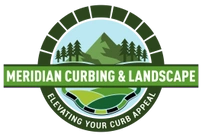My Blog

CURBING: THE ULTIMATE GUIDE TO A BEAUTIFUL LANDSCAPE
Curbing is an excellent way to add a finishing touch to your landscape design. It defines edges, creates borders, and enhances your outdoor space's overall aesthetic appeal. Curbing comes in various materials and styles, making it a versatile option for any landscape. This guide will explore everything you need to know about curbing, including its benefits, types of materials, installation, and maintenance.
Benefits of Curbing
Enhances Curb Appeal - Curbing adds a visual appeal to your property by creating a neat and attractive appearance. It increases the value of your home and makes it more attractive to potential buyers.
Defines Edges - Curbing creates clear borders that separate different areas of your landscape, such as a flower bed, lawn, or driveway. This definition can help make your landscape appear more organized and well-maintained.
Controls Erosion - Curbing helps control soil erosion by preventing soil from washing away during rain or wind. It helps to keep your landscape looking healthy and green.
Low-Maintenance - Most curbing materials require minimal maintenance, making them an excellent long-term investment. They are durable and resistant to harsh weather conditions.
Types of Curbing Materials
Concrete - Concrete is the most popular material for curbing. It is affordable, versatile, and can be molded into various shapes and designs.
Brick - Brick curbing adds a classic and elegant look to any landscape design. It is a durable and long-lasting material that is perfect for creating garden borders and walkways.
Stone - Stone curbing adds a natural and rustic appeal to your landscape. It is a great option for creating garden borders, walkways, and retaining walls.
Plastic - Plastic curbing is a cost-effective and flexible option for landscape edging. It is easy to install and requires minimal maintenance.
Installation Process
The installation of curbing depends on the type of material used. Here is a general guide to the installation process:
Mark the Edges - Begin by marking the edges of the area you want to edge with stakes and strings.
Dig a Trench - Dig a trench along the edge of the area you want to edge. The trench's depth should equal the height of the curbing.
Prepare the Base - The base of the trench should be level and compacted. Add a layer of gravel or sand to provide a stable base for the curbing.
Install the Curbing - Place the curbing in the trench, ensuring it is level and flush with the ground. Use stakes to secure it in place.
Fill the Trench - Fill the trench with soil, and pack it tightly around the curbing.
Maintenance
Most curbing materials require minimal maintenance, but keeping them clean and free from debris is essential. Here are a few tips for maintaining your curbing:
Sweep regularly - Regular sweeping will help remove dirt, debris, and fallen leaves that may accumulate on the curbing.
Remove weeds - Keep the area around the curbing free from weeds to maintain its appearance.
Seal the curbing - Consider applying a sealant to the curbing to help protect it from weather damage and staining.
Conclusion
Curbing is an excellent way to add a finishing touch to your landscape design. It defines edges, creates borders, and enhances the overall aesthetic appeal of your outdoor space. With so many different types of curbing materials available, it's easy to find a style that complements your landscape design.
